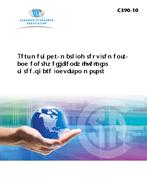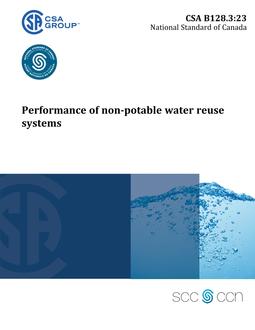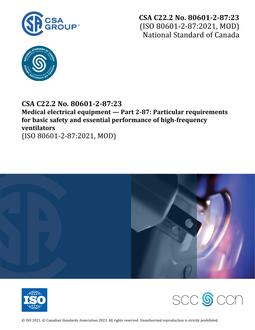
CSA C390-10 (R2015)
Click here to purchase
IMPORTANT: Enable the Macros when opening the Excel worksheet showing an example of a completed energy efficiency test report for three-phase induction motors.
Preface
This is the fourth edition of CSA C390, Test methods, marking requirements, and energy efficiency levels for three-phase induction motors. It supersedes the previous editions, published in 1998, 1993, and 1985, under the title Energy Efficiency Test Methods for Three-Phase Induction Motors, and Preliminary Standards C390.1 and C390.2, published in 1982. This new edition was revised to expand the scope to cover efficiency levels for motors up to 500 hp, inclusion of high or premium efficiency levels, clarifications to the testing methodology, revisions to the accuracy of the testing equipment, inclusion of uncertainties for the measurements to be taken, and updates to the Annexes.
Scope
1.1This Standard specifies the test methods and marking requirements, and references energy efficiency levels for three-phase induction motors.Note: The test methods contained in this Standard are not limited to specific types of motors, but where this Standard is referenced in regional legislation, some specific motor types might be included or excluded from the regulations. Legislated requirements for a given jurisdiction supersede the requirements of this Standard and neither should be used without the other. See Annex D for further information on the application of these requirements.
1.2This Standard applies to three-phase induction motors rated 0.746 kW at 1800 rpm (or equivalent) and greater.This Standard establishes minimum efficiency levels for both NEMA and IEC motor designations covered by legislated requirements. Efficiency requirements for units rated for operation at 60 Hz are defined in Tables 2 and 3. Efficiency requirements for units rated for operation at 50 Hz are defined in Tables 4 and 5.Note: An equivalent motor is a motor with the same torque output but with different kilowatt output and speed.
1.3In CSA standards, “shall” is used to express a requirement, i.e., a provision that the user is obliged to satisfy in order to comply with the standard; “should” is used to express a recommendation or that which is advised but not required; and “may” is used to express an option or that which is permissible within the limits of the standard.Notes accompanying clauses do not include requirements or alternative requirements; the purpose of a note accompanying a clause is to separate from the text explanatory or informative material.Notes to tables and figures are considered part of the table or figure and may be written as requirements.Annexes are designated normative (mandatory) or informative (nonmandatory) to define their application.
1.4The values in SI (metric) units are the units of record for the purposes of this Standard. The values given in parentheses are for information and comparison only.
Product Details
- Published:
- 03/01/2010
- ISBN(s):
- 9781554913787
- Number of Pages:
- 56
- File Size:
- 1 file , 8.8 MB
- Product Code(s):
- 2420530, 2420538, 2420530


